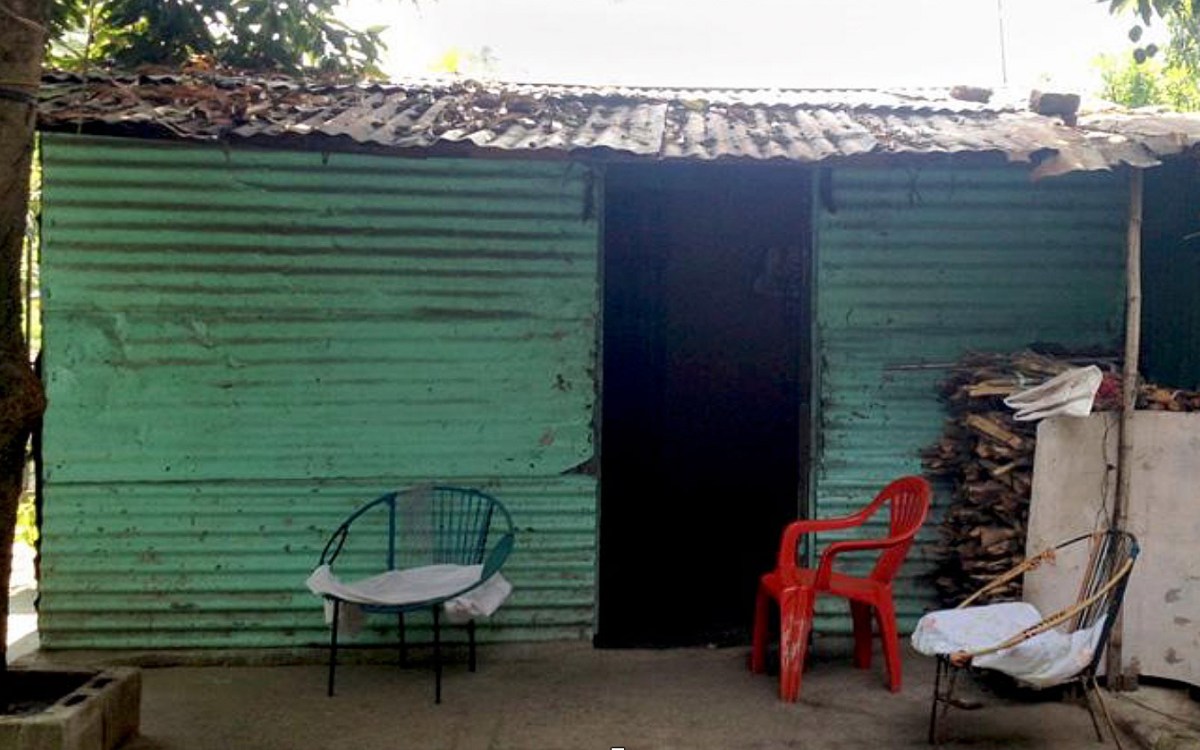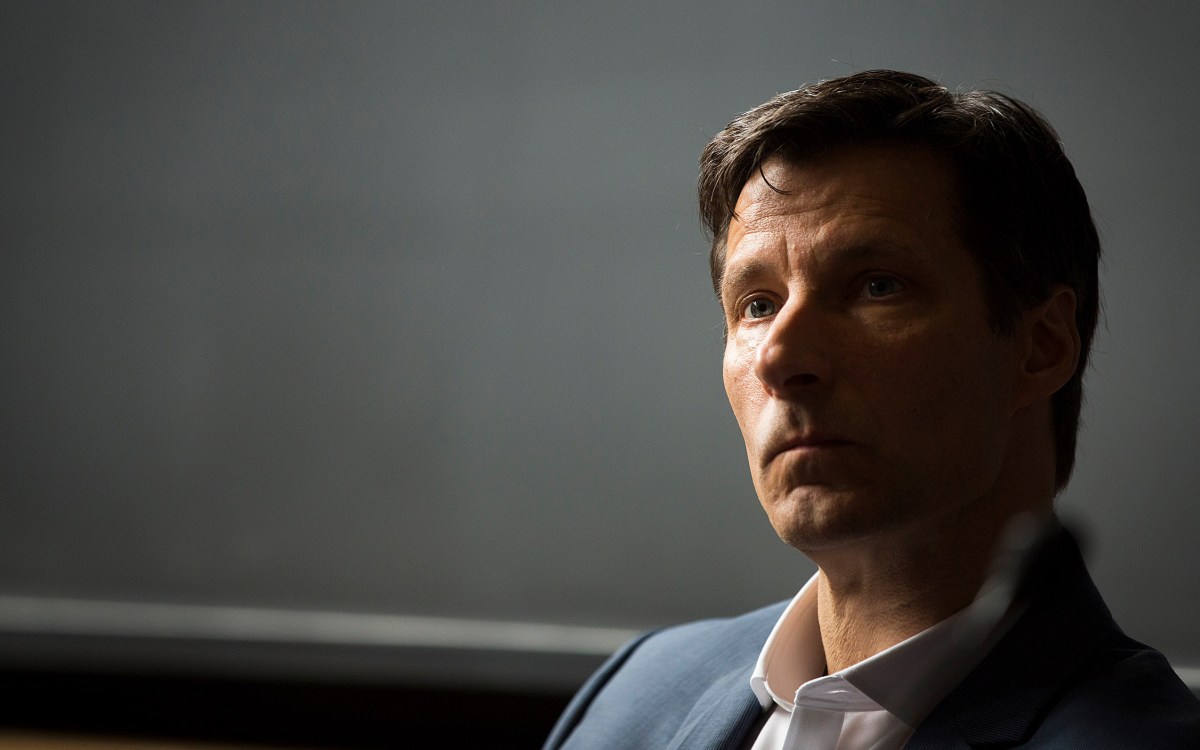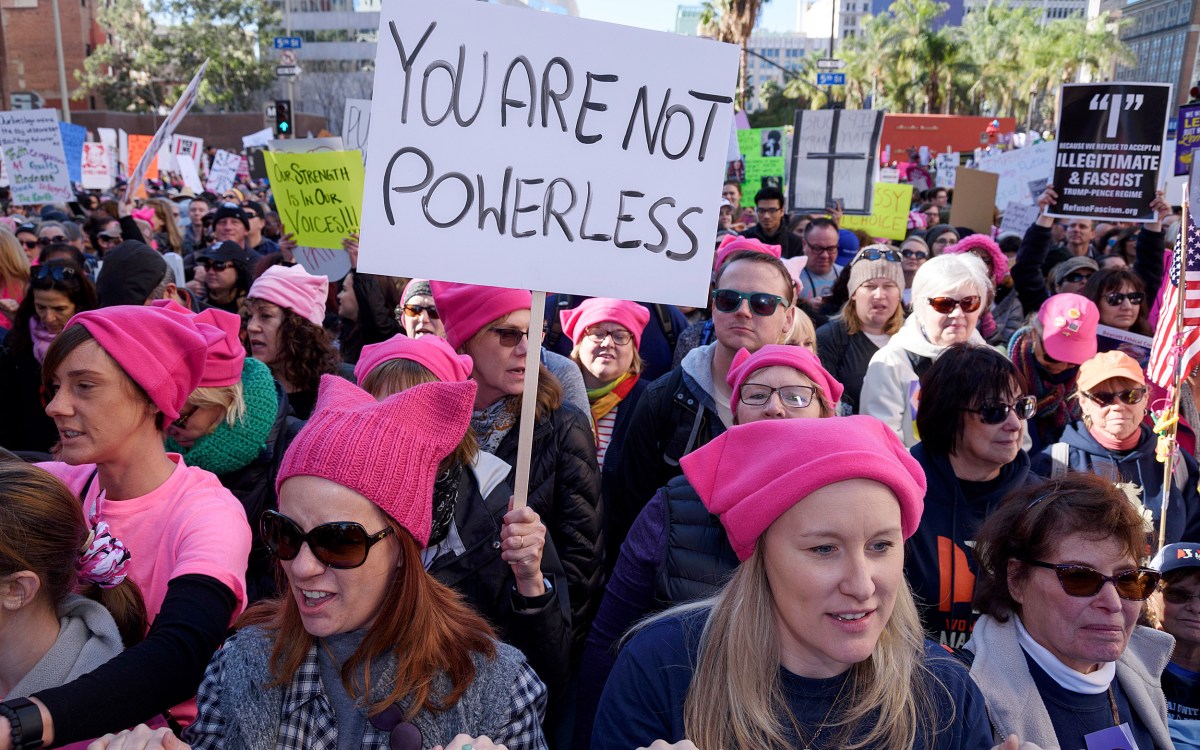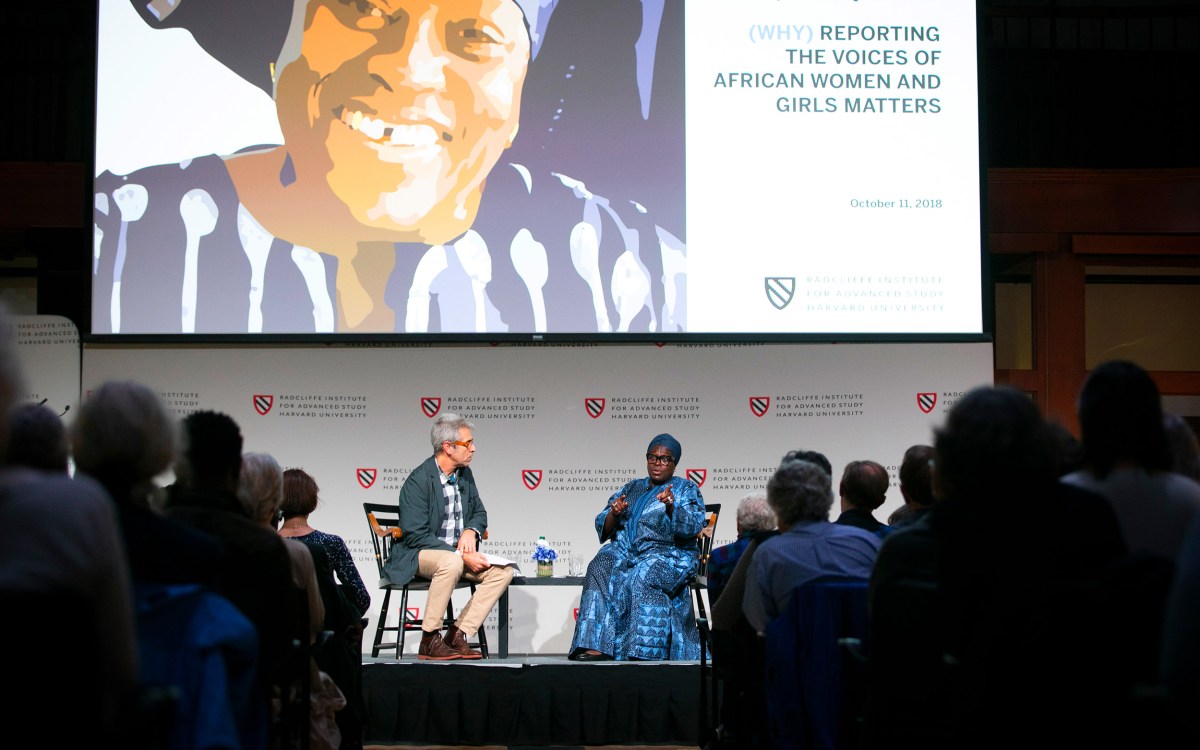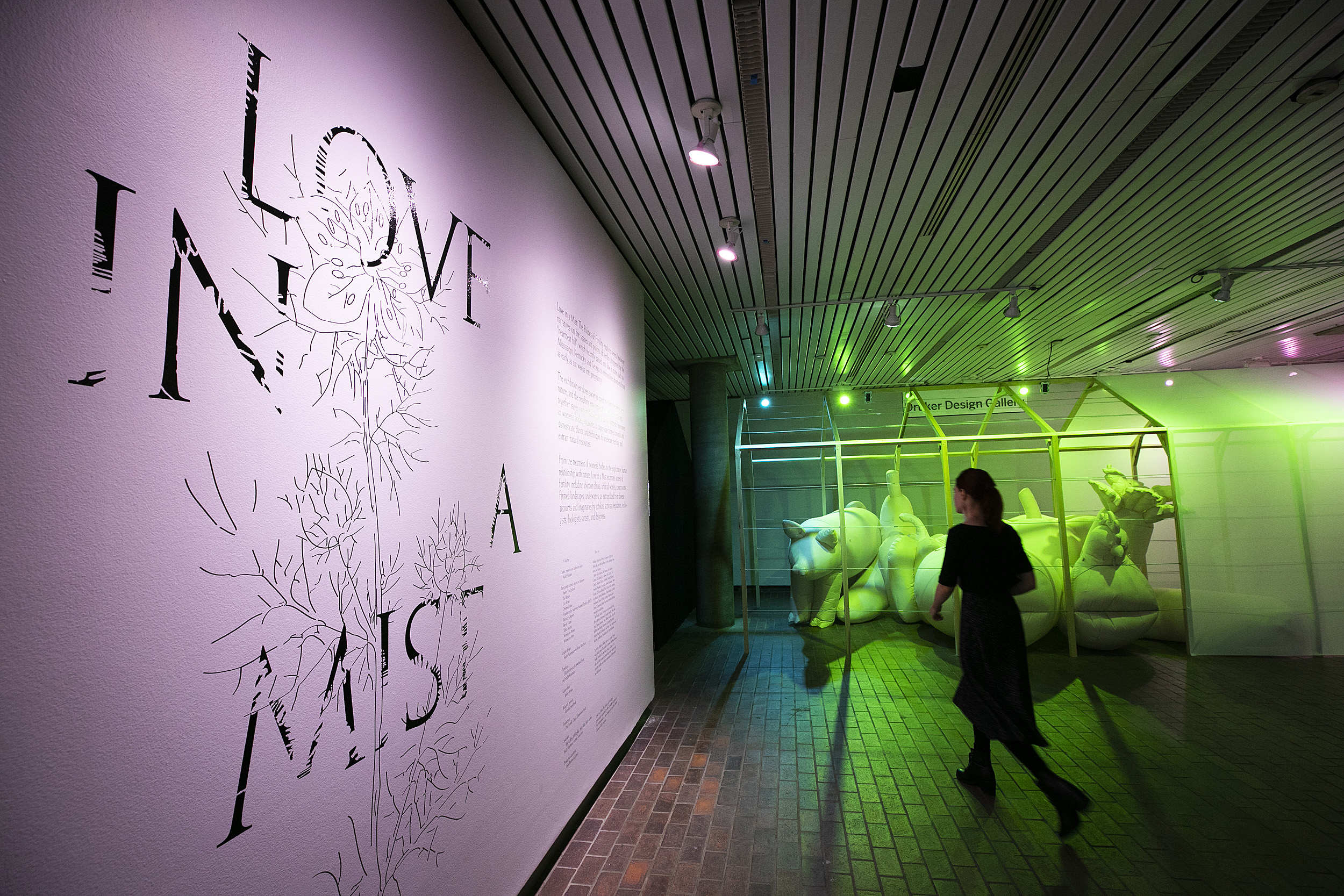
Photos by Stephanie Mitchell/Harvard Staff Photographer
To control women, fertility, and nature itself
Multimedia hothouse circles the intersection of art and activism
“Love in a Mist (and the Politics of Fertility),” the fall exhibition at Harvard Graduate School of Design (GSD), explores difficult questions of fertility, growth, and control in humans and nature.
Inspired by various state legislative efforts to roll back women’s reproductive rights, the show incorporates photos, video, sound, sculpture, maps, and text, drawing on the work of predominantly female artists, designers, and activists to consider what curator Malkit Shoshan calls “the spaces and politics of fertility.”
The exhibition centers around the greenhouse as a site of both care and control and explores efforts to manipulate reproduction, from ancient medicinal herbs (the show’s title refers to a flower whose black seeds were once ingested to induce contractions) to the widespread use of synthetic hormones to regulate women’s ovarian cycles, supersize domestic livestock, and accelerate crop growth, and the lasting impacts, said Shoshan.

In the audio clip, curator Malkit Shoshan, above, gives an overview of the exhibition.
transcript
Transcript:
The reason I chose the greenhouse as a structure is that it brings forward this tension between care and control. So, in the greenhouse, we seed our seeds and nurture our plants and we take care of them, but at the same time, we detach the seeds from their natural environment and we put them in a very controlled place.
The exhibition explores society’s quest to control women and nature and the resulting environmental degradation. It looks at the historical use of synthetic hormones in women’s bodies and all sorts of techniques and spaces to facilitate accelerated growth and extract natural resources.
The exhibition is basically constructed along four main themes. The first one is reproductive rights, the second one is accelerated growth, the third one is extinction, and the fourth one is compost. Each theme brings together several artworks that create this connection between space and the issues that we explore. And the artworks are diverse. It can be a video work, or it can be a map, or an infographic that illustrates a certain type of story. So, in principle, the way I see the exhibition and the way the exhibition can be read is like a series of snapshots. Each one brings a certain type of idea or an intervention or a certain type of question that addresses the topics that run through the exhibition.
Shoshan is area head of GSD’s Master in Design Studies program’s art, design and the public domain group and founder of the Foundation for Achieving Seamless Territory (FAST), a think tank based in New York and Amsterdam that focuses on architecture, urban planning, design and human rights.
“Since I started studying architecture in Israel, I realized very quickly the relations between politics, ideology, and space,” said Shoshan, who studies the architectural legacies of U.N. peacekeeping missions. “Space is organized usually not by the designers themselves, but according to certain types of policies and an agenda that are set up by the government, by the power structure, by [the] corporate [world]. And so, I always ask, ‘What are our responsibilities as designers, as architects, as planners to understand the consequences of our design?’”
The exhibition is on display until Dec. 20 in the Druker Design Gallery at Gund Hall, GSD.
In additional audio clips below, curator Shoshan talks in more detail about the themes behind several of the pieces in the exhibition.
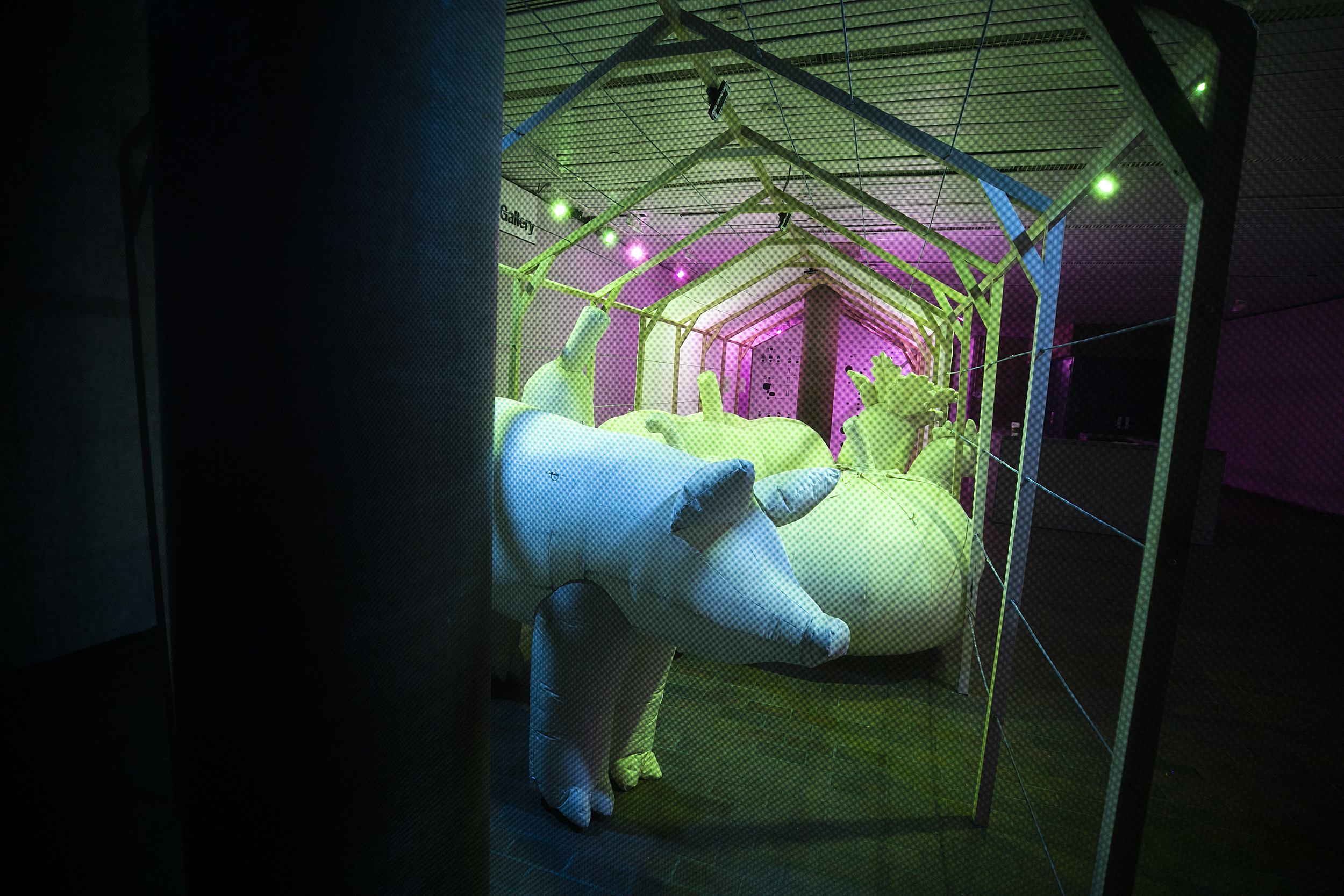
‘Super-Sized Farm Animals,’ FAST (2019)
transcript
Transcript:
The center of the exhibition is, in a way, where all the parts are coming together in a visual way. So, the idea of these inflated farm animals and vegetables that are supersized is almost an ironic way of looking at our reality today. We pumped our body, we pumped our food, we pumped the natural environment with all kinds of fertilizers and steroids and chemicals that take things out of proportion. And it feels to me when looking through this research that there are two processes that are taking place at the same time, one is the accelerated growth motivated by greed of extraction of natural resources and from the other hand, you have the consequences of that, the degradation of nature, and extinction.
‘Complex Systems,’ Desirée Dolron (2016)
transcript
Transcript:
The reason I added “Complex Systems” to the show and actually decided to end the exhibition with this piece is because it brings forward the dichotomy between the individual and the collective where she tried to trace back through the movement of birds in the sky some of our psyche when we deal with complex systems, how as individuals we look into collective problems or into collective issues, but at the same time remain ourselves. So I think this tension between the individual and the collective and the notion of unconsciousness and psyche are coming together in this piece.
One of the sensations that this artwork brings forward, and what Desirée is trying to research with this work, is the relation between the singular and the shared intelligence. What she tried to do is to ask questions that I think are very relevant to the show and our reality today, about humanity and the psyche and the possibility of a different type of intelligence that we are not aware of. She is looking for the unconsciousness and the way we are able to engage with certain types of transitions that might be overwhelming to find a different type of strength, a different type of intelligence, a different type of relation with a certain type of problem or topic or urgency. So maybe similar to the work of Tabita Rezaire that brings forward these forms of collective healing, Desirée brings up this notion of unconsciousness and this hidden intelligence that is part of all of our bodies, not only as individuals but also as a collective.
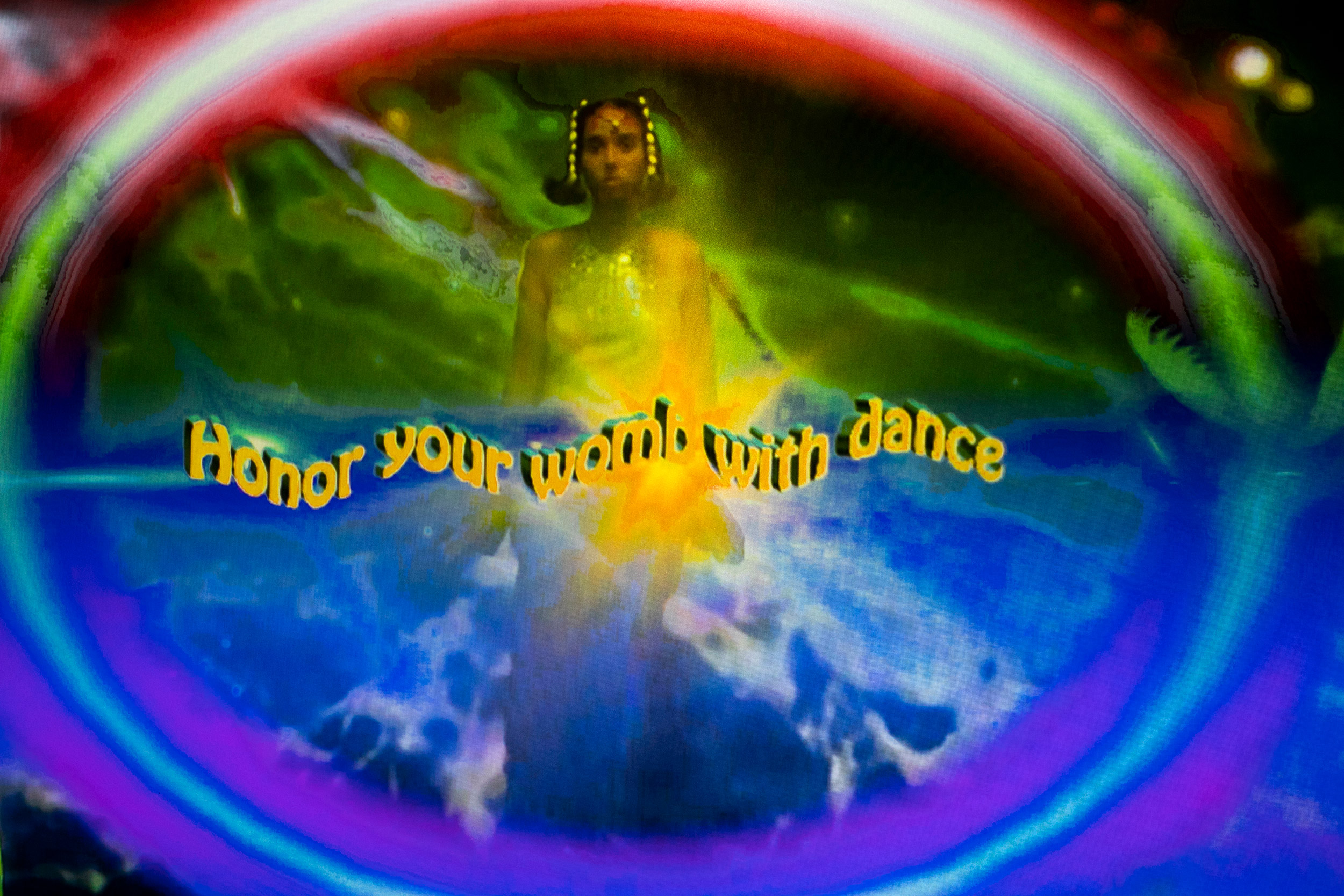
‘Sugar Walls Teardom,’ Tabita Rezaire (2016)
transcript
Transcript:
The last part of the exhibition aims to give us, not a way out, but trigger our imagination to think about different realities, about different situations, about different questions that we can ask, and ways we can heal our bodies and ourselves and our minds. And what I love about Tabita’s work is that she takes one of the most violent situations and turns it around, and turns it into a process of healing. And think, OK, so how we can think beyond this very harsh reality, this very violent legacy of fertility treatment in African American women’s bodies, and how we can think about a different type of future where we can grow out from here. The way she uses visuals, the way she thinks, is something that is an angle that I wanted to add to this exhibition because I think it’s a valuable perspective and it’s a way to really look forward and engage with art, with design, with our capacity to develop different imaginaries and different imagination of what a future in this world can be.
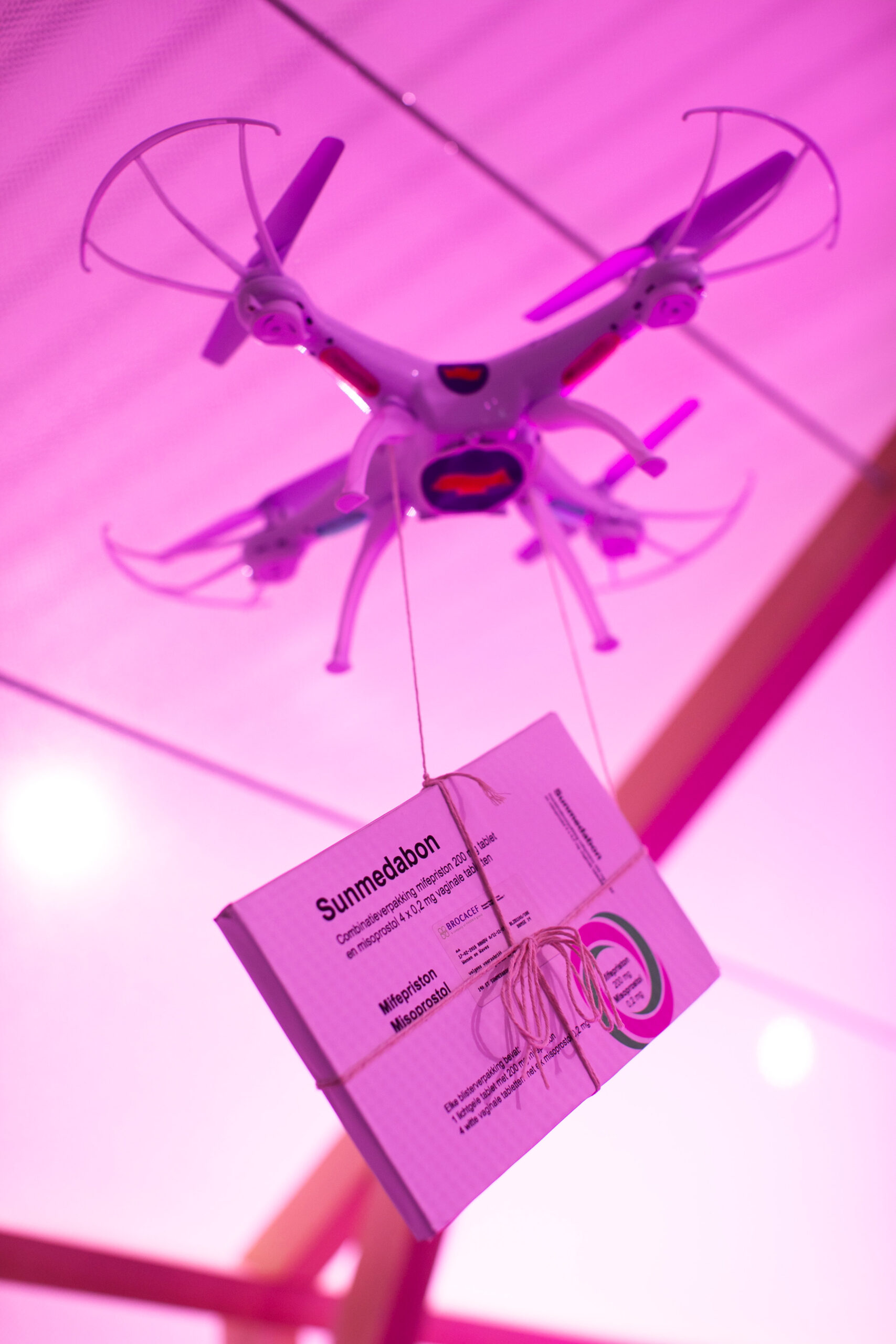
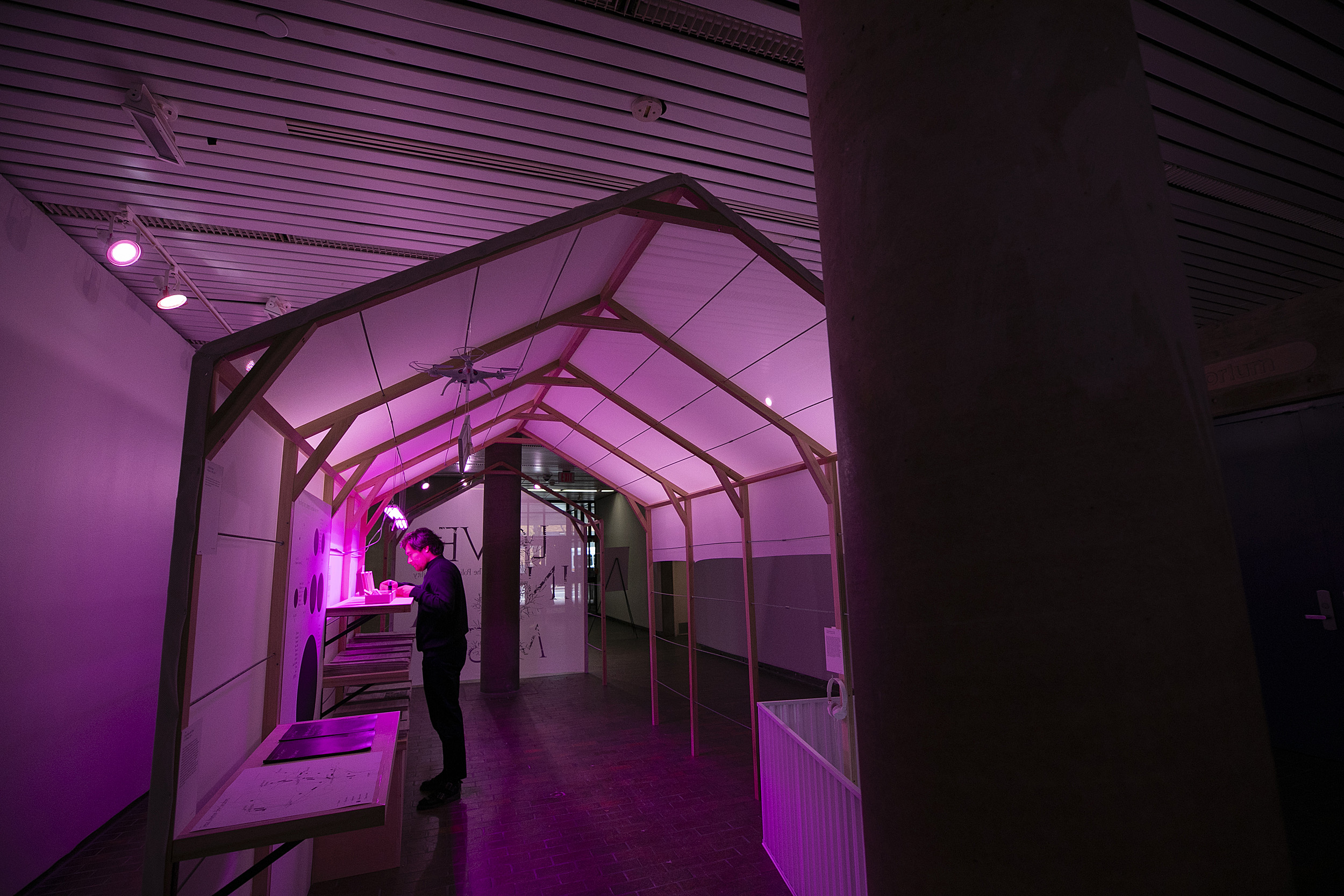
‘Abortion Drones,’ Women on Waves
transcript
Transcript:
“Abortion Drones” is a project by Women on Waves. It’s a campaign that aims to help women, and support women, in countries where abortions are illegal. What they do is send drones with pills from countries where abortions are legal to women in countries where abortions are illegal. Through that, they offer an access to safe abortions in these countries.
I think drones are an interesting phenomenon today because it allows you to navigate through space, and see and communicate and move through space, in ways that we couldn’t have done before. And what is interesting to see with the project of Women on Waves is how they took over the drone and used it for activism to move and promote a certain type of struggle through the use of the drone. It allows them to move pills and provide medical aid. I think the drone emphasizes the way we can use space, the way we can hack space, the way we relate to borders, the way we relate to territorial confinement. What I like about the drone is that it offers a certain type of freedom of movement and access that other tools might not be able to give us.
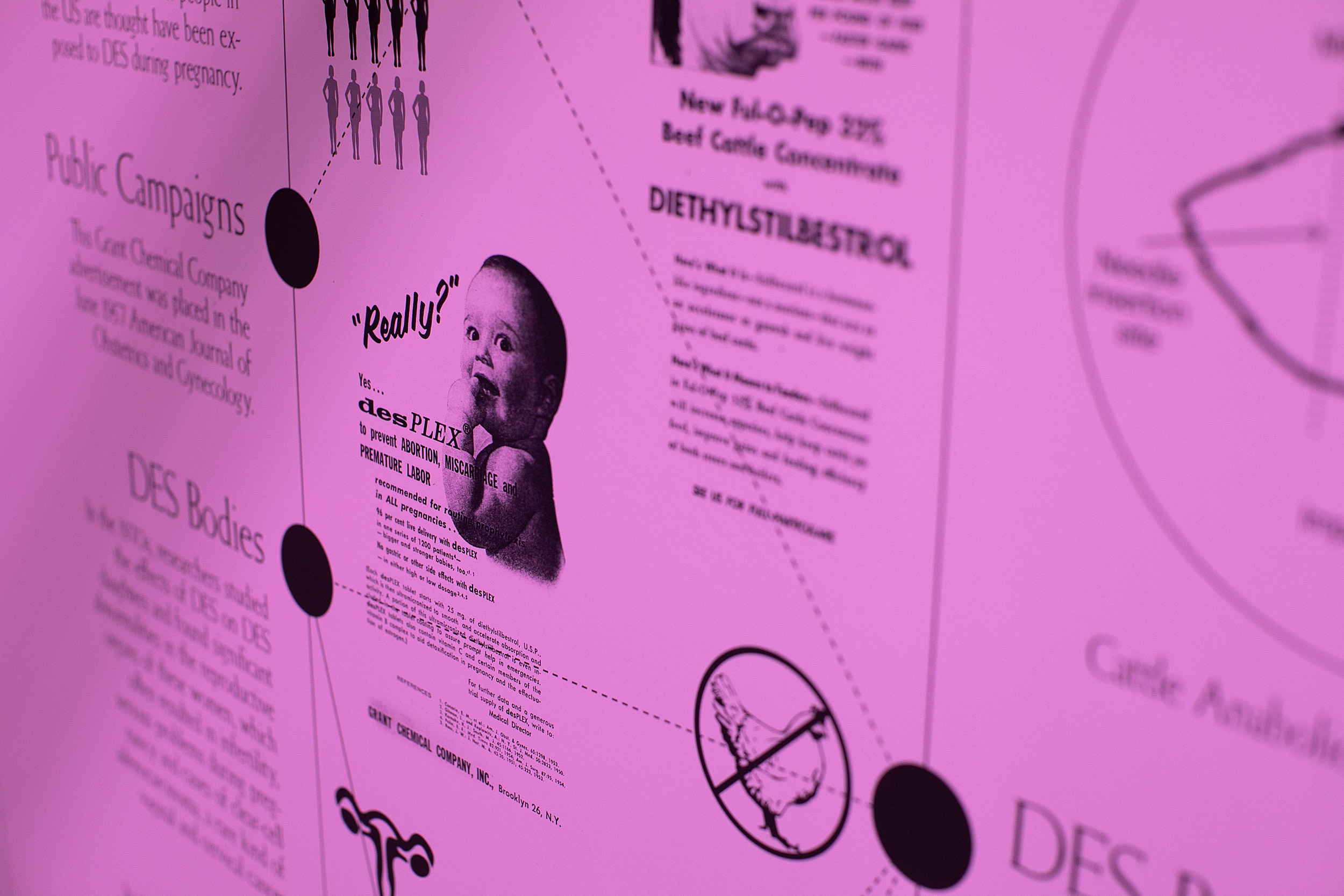
Informational papers from the Foundation for Achieving Seamless Territory (FAST)
transcript
Transcript:
Having a practice on the intersection between architecture, urban planning, and activism, human rights, I feel that we always need to play and test different types of methods and different ways to communicate with the public our findings, our research, and different ways to bring certain struggles to life. What I find in this exhibition, and most of the exhibitions that I’ve been working with, we always challenge the boundaries of what architecture is, what art is, we work across disciplines, or we use different types of information. So, I also see these exhibitions as a pedagogical tool to inform the public, inform the viewer, offer additional information about the topic that the exhibition addresses, so it’s not only a visual immersion, it has more. What I hope is that this exhibition will offer some tools for people who would like to engage more with the topic. I feel that these informative papers are also tools for empowerment.



